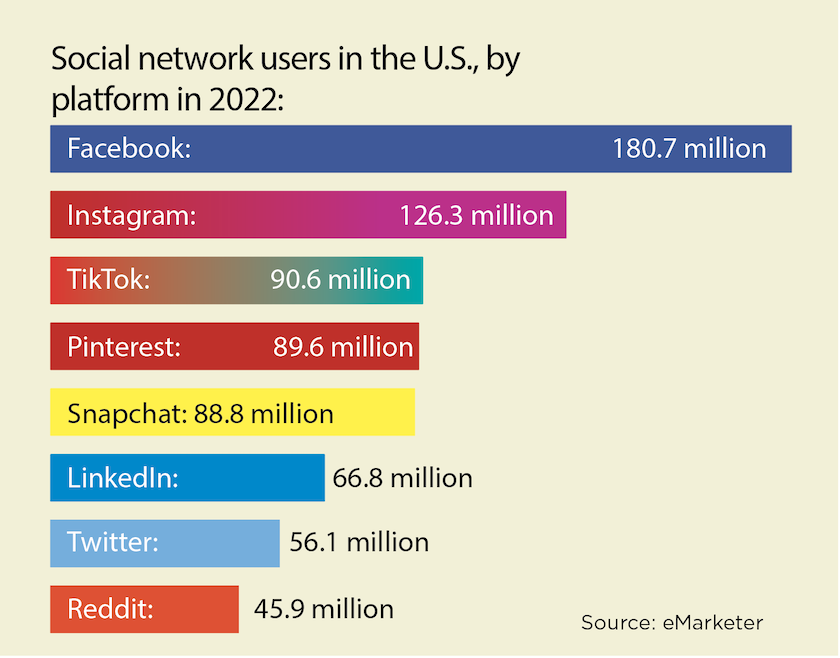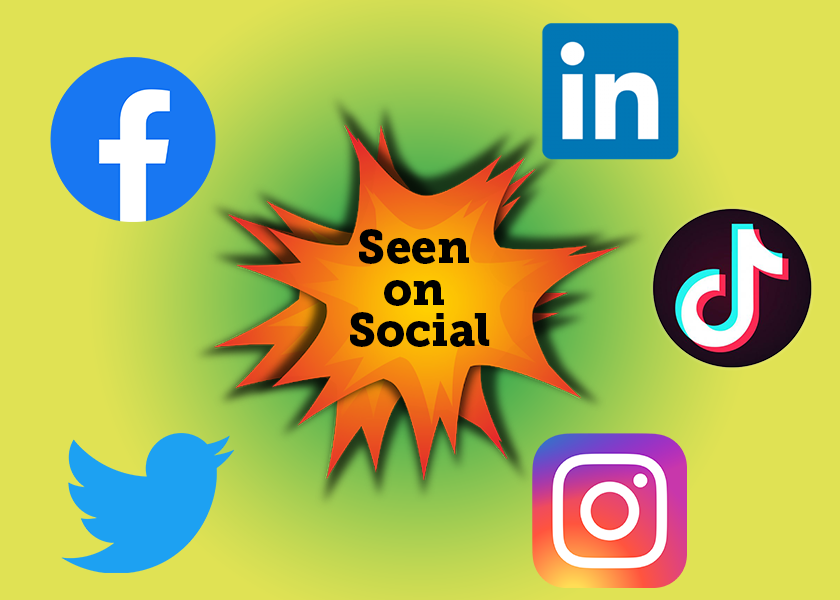'Tip of the Iceberg Podcast': Moxxy Marketing's Karen Nardozza on social media
Karen Nardozza of Moxxy Marketing on using social media wisely
Social media has morphed from an entertaining way to communicate with friends (or just creep on old classmates) to a legit business tool.
Instagram alone reaches 126.3 million users, according to a Jan.18, 2022, report by eMarketer. That platform, plus Facebook and TikTok, are the best ways to reach consumers directly to increase brand awareness and educate the public about your products, your company story, process, challenges, wins and services.
LinkedIn, with its 66.8 million users, is the best channel for business-to-business communication.
“These media channels can't be ignored and should at least be considered,” said Karen Nardozza, president and CEO of Moxxy Marketing. “I am not by any means suggesting that everybody needs to be on every social media platform. I'm not even suggesting that every brand or company needs to be on social media at all.”
Company leaders need to establish their goals and objectives for the year, and what they want to get out of their social media, if anything.
Peter Baughman of FoodMix Marketing Communications is adamant about how much social media matters.
“Absolutely, full stop, social media is the most important touchpoint your brand can have,” Baughman said. “It allows you to show your brand in a variety of different ways you can’t do with a banner ad. There’s so much depth of engagement and breadth of audience you can have compared to traditional marketing and advertising channels.”
Limited resources
But smaller companies may not have the time and resources to properly manage social media. Done improperly, social media can do more harm than good, Nardozza said.
“It's a very high-profile channel. It's a strategic communications tool that requires the same sort of energy and thought that you would put into writing a customer letter or a customer presentation,” Nardozza said. “But it's often an afterthought or relegated to somebody who's so junior that they don't know what they're doing. And they're not receiving enough guidance and structure to do it well.”
Some companies hire marketing firms to set up their social accounts and train them on how to use them, acting as an advisor after they’ve handed the control to the company. Large retailers and big, savvy produce brands have marketing teams to handle social media.
Also, companies can outsource all of their social media to somebody else and have them create all of the content and do all of the messaging — “as long as you had an input session and that you're in alignment on the strategy and what is brand-appropriate,” Nardozza said. She’s heard in her advertising association groups that social media management prices can range from $500 to $4,000 a month per channel.
And then, some company leaders just do it themselves.
Shay Myers, CEO of Owyhee Produce in Nyssa, Ore., and Parma, Idaho, is known for his short explainer reels to consumers as @ShayFarmKid on TikTok, Instagram and Facebook, as well as his posts for the more industry-heavy audience on LinkedIn.
Myers uses LinkedIn to talk to buyers in the industry. “I like to educate those that buy from us — or might buy from us or buy produce in general — on all the work that it really takes to do what we do,” Myers said.
He believes it’s a necessity to educate the consumer in any way possible because of the disconnect they have from their food sources.
“Even the folks in the industry don't understand the subtleties and the details of what it takes to get the produce from the field to the fork,” Myers said. “And I just feel like I can't ask for 50 cents more for a bag of onions if people don't really understand the work that's involved in the process. And I want you to know what it really takes.”
He’s gained new business from posting on social media but considers financial benefits a byproduct or perk for making the effort.
Retail partnerships
Many retailers are missing an opportunity in not partnering with their growers, he said.
“I cannot believe how much retail is missing the boat on the ability to educate their consumers about where their food comes from. There is huge interest — interest like there has never been in probably living memory — in where food comes from, how it's grown, what the process is, and people are all over the internet looking for that,” Myers said.
A one-off farm visit conducted by the retailer comes off looking more like a commercial than a story, he said, which isn’t as effective.
He does understand the concerns of some national retailers.
For instance, Owyhee Produce may supply that national retailer, but it doesn't supply every store.
On the flip side, his farm may be one of 10 shippers-growers that supply the national retailer. “So, do the other growers feel alienated by the fact that Shay and Owyhee Produce are getting highlighted, and they're not?” he asked. “I would say, if we're promoting onions and promoting farming, we're all winning. I can't supply all the onions for a national chain anyway myself.”
Targeted geographic marketing can help, possibly, he said.
The grower could pick a state, region or city that’s guaranteed to be, in this case, an Owyhee Produce audience, and tell the story just there and see what the results are.
“But to this day, nah, I haven't seen it happen,” he said.

Nardozza offered a different take on how suppliers and retailers can partner on social media.
If you’re a supplier meeting with a retailer, it could be a real advantage to demonstrate that you have a social media presence, which can be one of the ways that you are going to support the retailer in carrying your product, she said.
“Because you can offer additional added value through promotional support,” Nardozza said. “It might make a difference in whether or not your product is carried or trialed if you can add that promotional support.”
Because retailers have their own social media channels, there’s opportunity to collaborate and tag one another to expand the reach.
To Myers’ point, if retailers are hesitant to show favoritism with one supplier over another with social media partnerships, using influencers can be a solution, she said.
“Let the supplier introduce one of their influencers to the retailer’s social media marketing team and put the collaboration together. That way, it puts in a layer and doesn't make it seem so direct,” Nardozza said.
Learn more from Nardozza in Episode 76 of the "Tip of the Iceberg Podcast."
These influencers are often chefs, lifestyle experts and dietitians, working with buyers to create recipes and educate consumers.
Fresh Innovations and its ¡Yo Quiero! brands based in Rhome, Texas, use influencers, said Jay Alley, co-owner and vice president of sales.
“We use social media influencers and other social strategies to get the word out about our product to drive sales,” Alley said.
The company promotes its produce-filled dips for different holidays, engaging the social audience by encouraging them to show their holiday spreads using their products.
Dovetailing on any trend — whether it’s a cuisine, a food holiday, popular culture, viral video or meme, or current events — is a popular technique for sharing on consumer-focused platforms.
Meal tips and consumer education, especially if you sell a lesser-known type of produce, are the foundation of posts on Instagram and TikTok, Nardozza said.
Also, Facebook engages local communities really well and is a great tool for recruiting to your company.

And never discount the usefulness of LinkedIn.
Just before the Southeast Produce Council’s Southern Exposure show earlier this month, Nardozza saw a lot of her clients use LinkedIn messaging to set up meetings with the retail and food service buyers at the show.
If someone really wants to get started, pick a single platform, and then just document what you're doing, Myers said.
His advice: “You just have to do it. I mean, that's the biggest thing: Be consistent and make sure that you do it,” Myers said. “And if you can do that much, that's probably what would set you apart from 70 or 80% of the competition out there.”
It doesn’t have to be perfect, super funny or super educational with beautiful scenes — those things that contribute to the potential virality of a video or post.
“If you don't post the videos in the first place, even the boring ones, you're not going to have any reach,” he said.
Related news:







